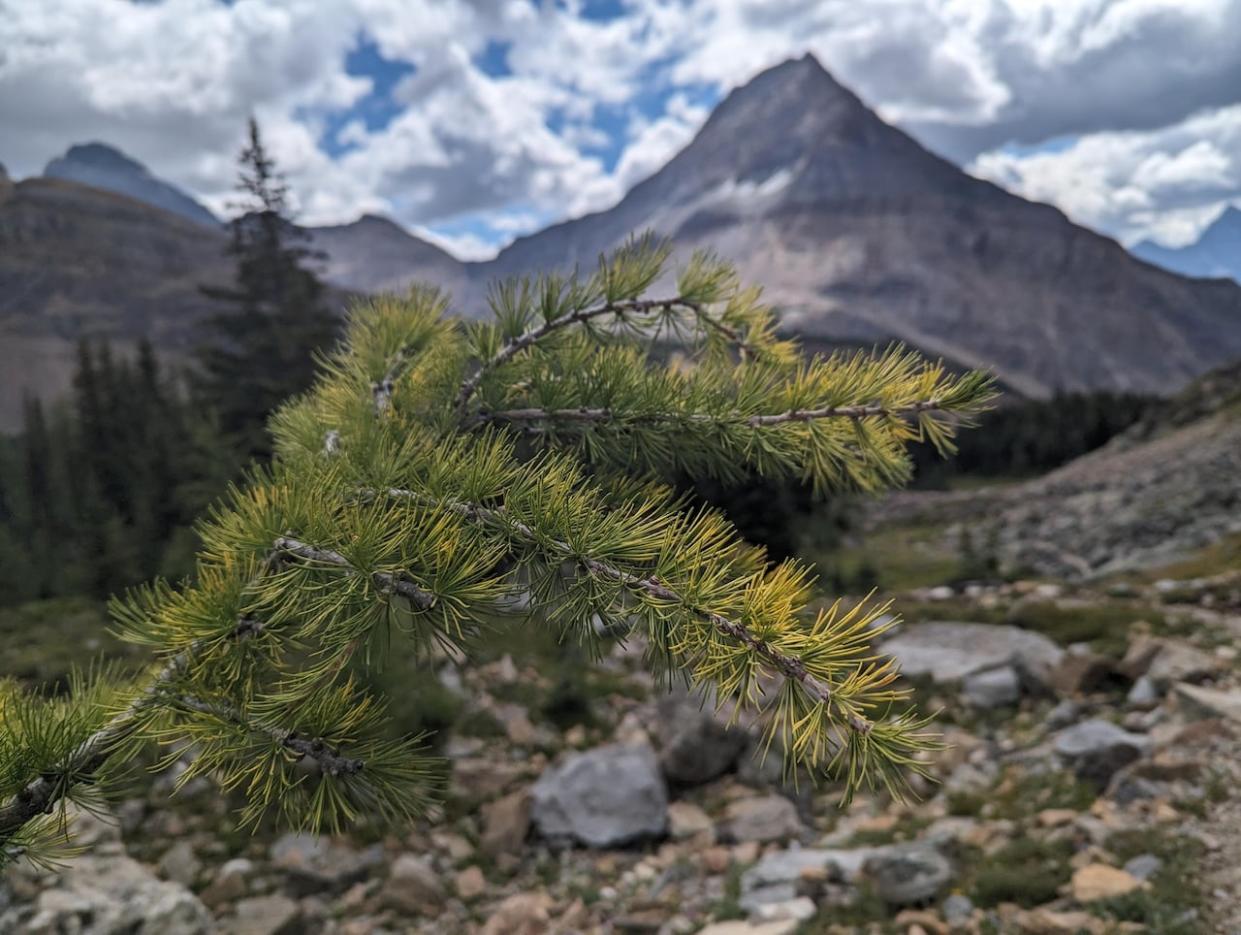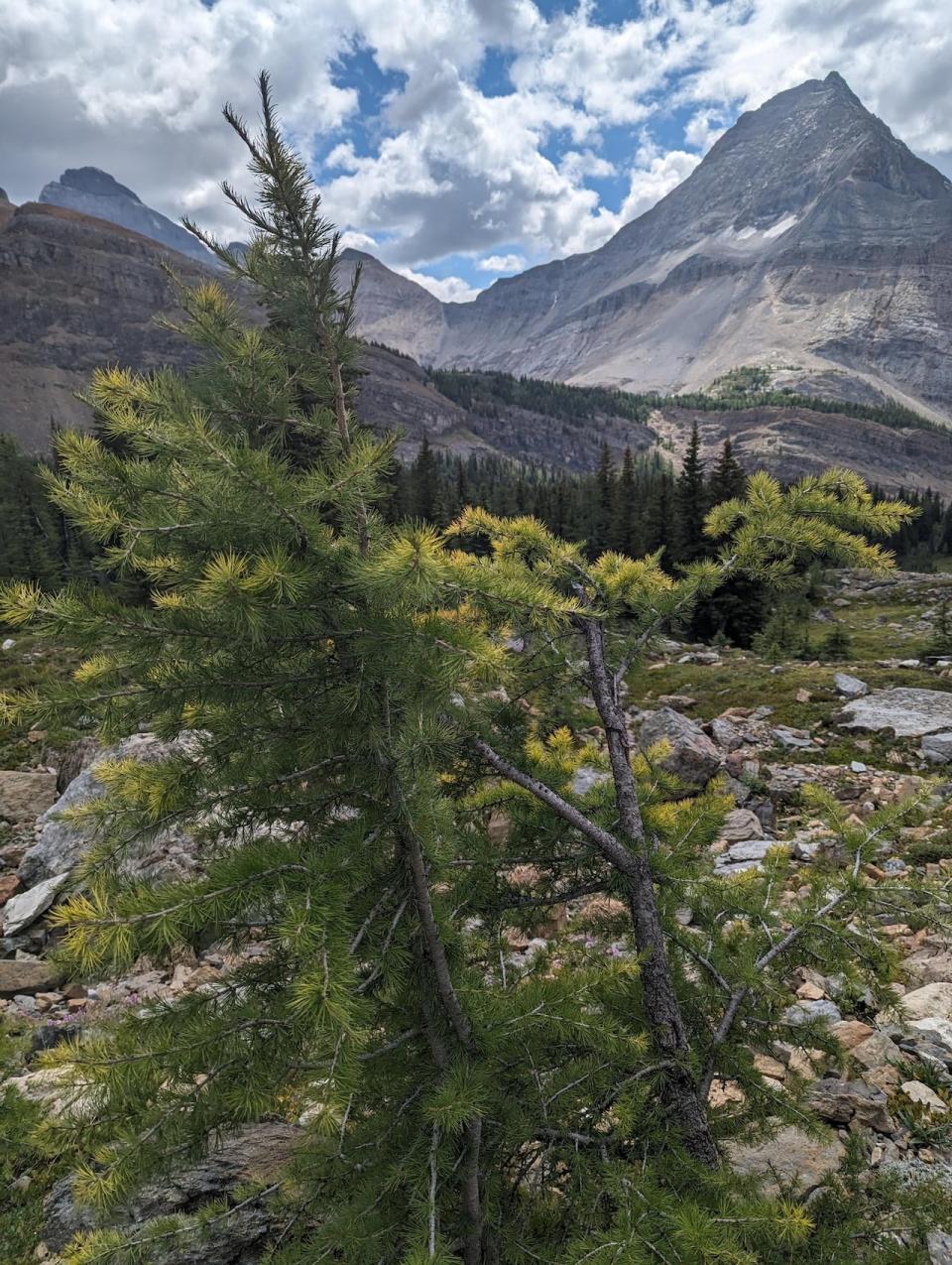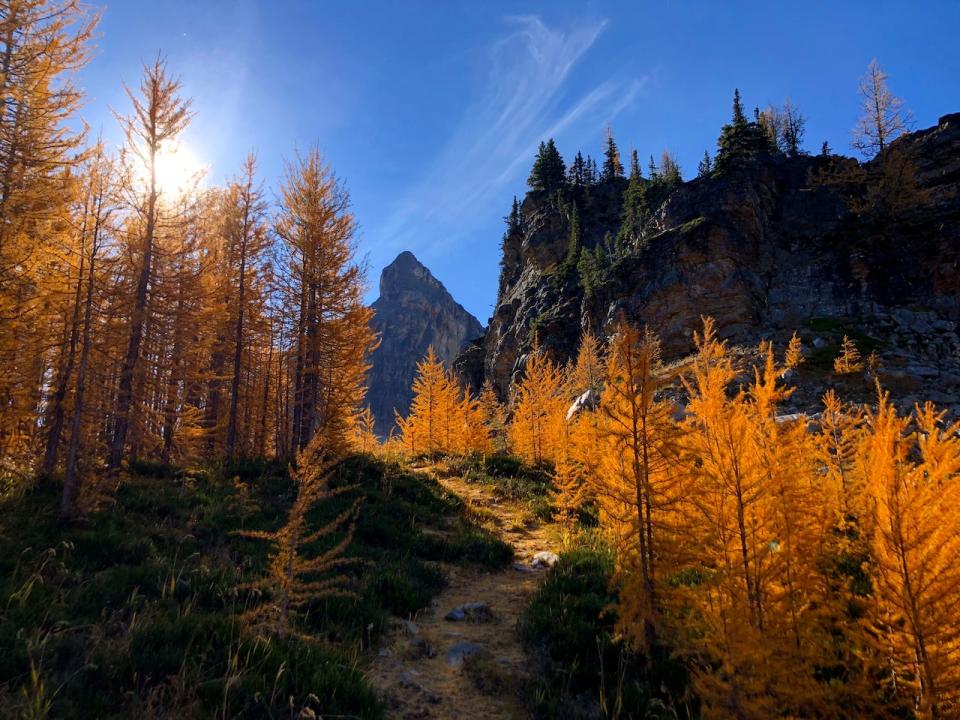Alberta could be in for an early larch season

Southern Alberta could be in for an early and potentially longer larch season this year.
Some Albertans have noticed that the deciduous conifer is already starting to change from green to its golden colour in the Rockies, with another month until fall.
Master arborist Gerard Fournier says he first noticed larches starting to turn at his tree farm in the beginning of August.

A Calgary biology professor says it's too early to tell if all larches will turn early, or if it's a sign of heat and drought stress in some trees. (Submitted by Annalise Klingbeil)
"It's an unusual year in that the spring came in early and also hot weather and drought probably plays a role as well in our native species accelerating that autumn colouration," said Fournier.
An early spring means the larches had an early growing season, he said.
Now, they could be in the process of downloading all the sugars they've been making in their leaves and "that unmasks the pigment that is in the leaf that we see as yellow," he said.
"It doesn't mean that it's going to be winter tomorrow or anything. But it does mean that the fall season is going to start early and hopefully it will extend later into the fall."
Fournier said he expects the larch season to reach its golden peak no later than mid-September this year. If the temperature gradually cools over the next few months, Alberta could see a longer season of bright autumn colours, he added.
Trees stressed from heat, drought conditions
For David Bird, an associate professor in the department of biology at Mount Royal University, it's too soon to say for sure whether all larches will turn early.
He says heat, drought and wildfire smoke can be big stressors for trees and plants often respond to stress by dropping leaves.
"All plants will show that if they're undergoing a high degree of stress … they'll just surrender some of their leaves, but will continue to photosynthesize and operate as normal," said Bird.

Larch trees in all their golden glory at Mummy Lake in Banff National Park last fall. (Submitted by Andrew Nugara)
Regardless, Bird said a number of studies over the years, including research done in Canada, suggests climate change is changing the distribution of larches.
"They seem to be finding the same patterns, namely that these large trees, which have adapted to cool and short growth season climates, are moving northward. They're not able to survive and compete in southern regions."
Bird says those patterns suggest that if the weather continues to warm, larches could expand more northward and to higher altitudes, and shrink here in southern Alberta.
"Climate change is real and it's affecting all things, including larches," said Bird. "Whether we're seeing a sudden die off [of larches] or some traumatic thing, I don't think so."


